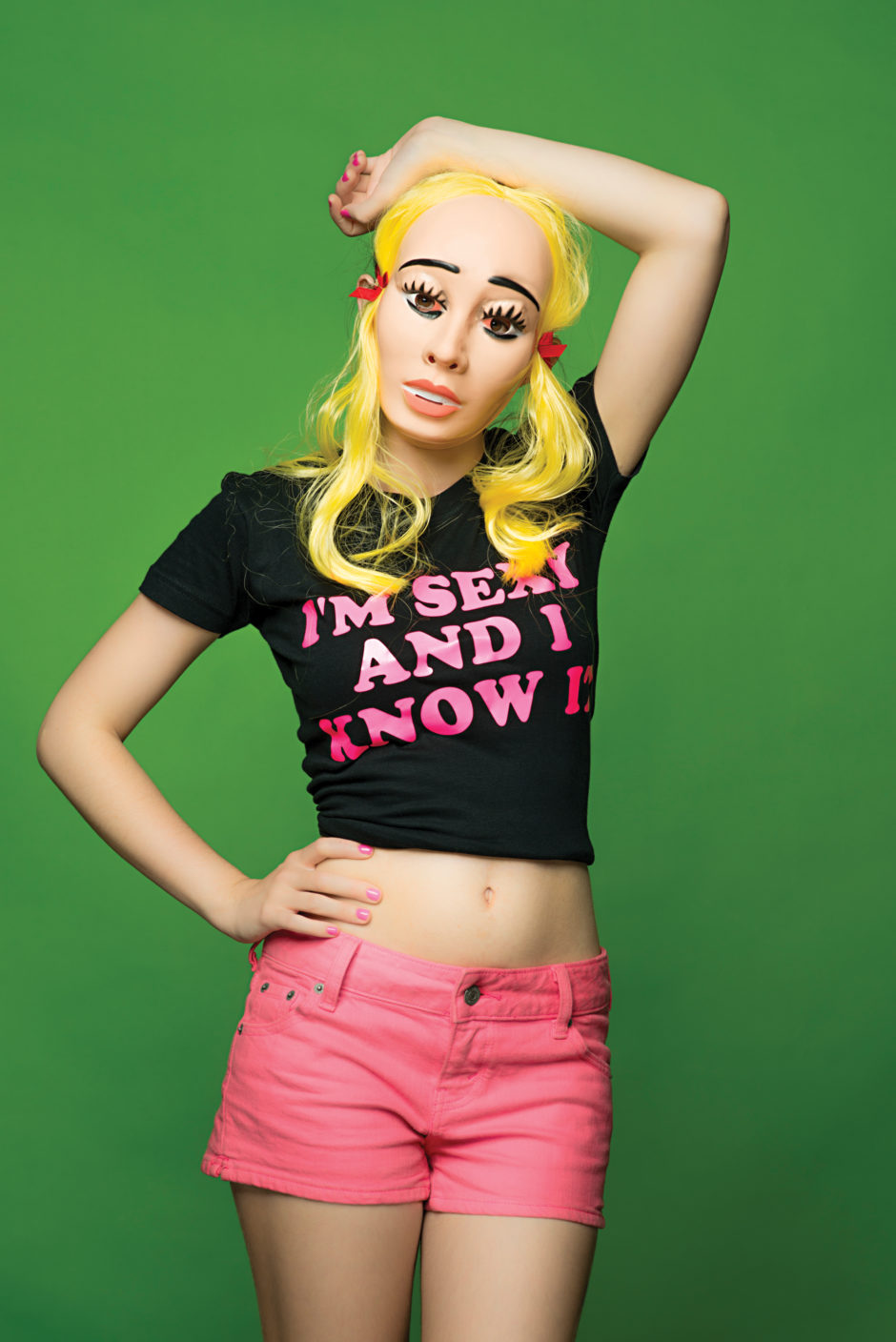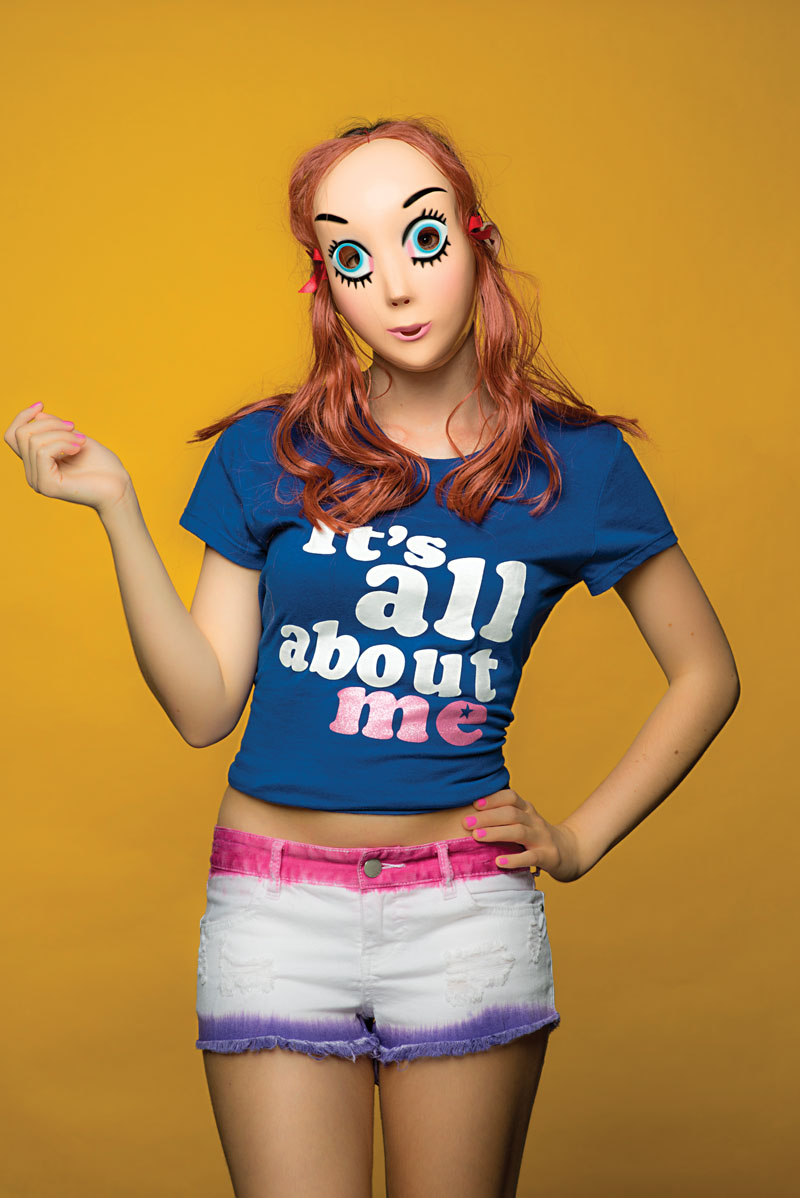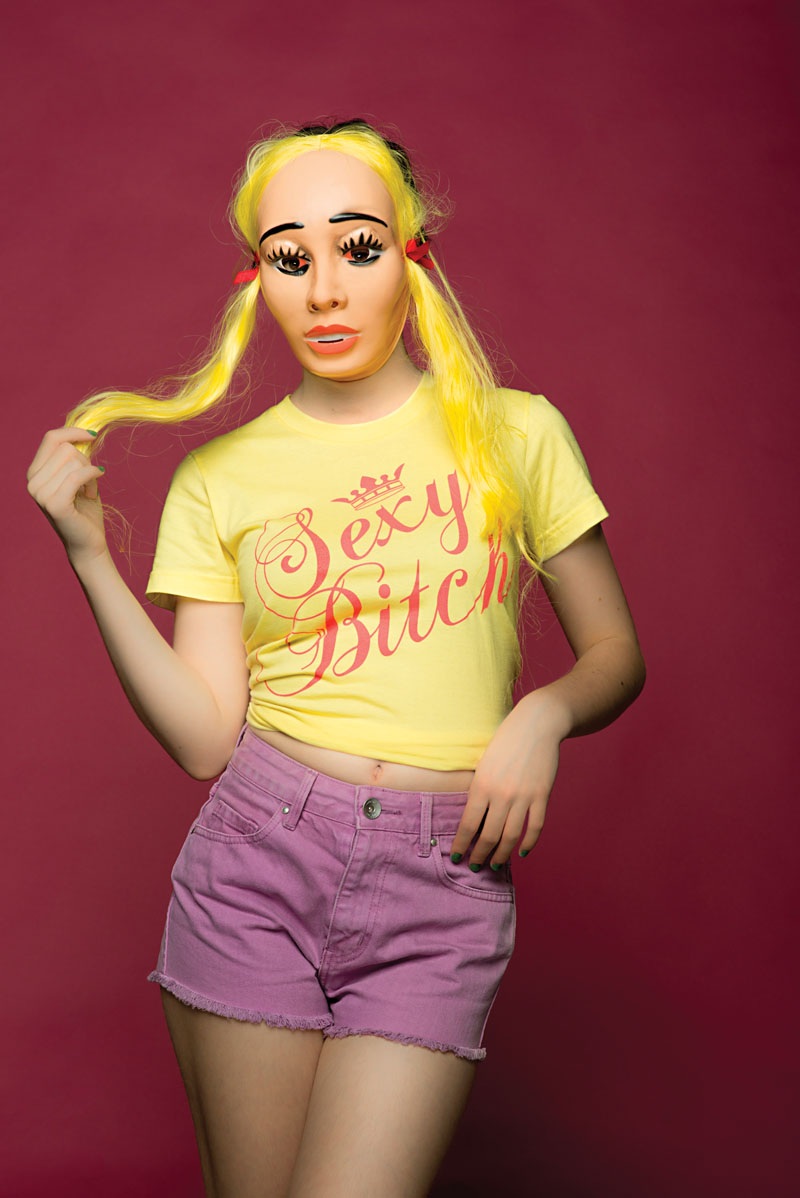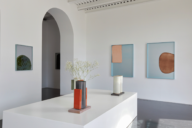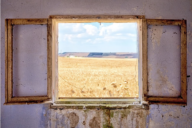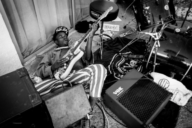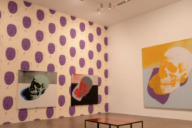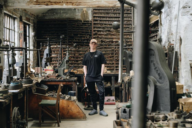POLIXENI PAPAPETROU THE REALM BETWEEN THE REAL AND THE IMAGINARY
Polixeni Papapetrou’s work often reveals the unconscious realm between the real and the imaginary, archetype and free play, child and adult, and photography’s capacity to bridge truth and fiction.
Can you tell us a little about how the series It’s All About Me came about?
It was sparked by some writing that my daughter Olympia had done, while still a teenager in the local press. She described the pressures of social media to adopt a pout, to present a sexualised persona in order to score ‘likes’ on Facebook or Instagram. Olympia’s case was subtle because she had equal suspicion for the adult crackdown on sexting and other promiscuous media practices that she felt actually did nobody any great harm unless adults get involved. So I thought that I’d investigate the brash and brazen world that seems to be so full of ironies. I discovered online that there were commercially available T-shirts declaring a provocative in-your-face attitude which, however, cannot be taken literally. And in the end, the very title “it’s all about me” is ambiguous, because it could mean all about the model, Olympia, or all about the artist, me.
How would you describe your photographic style?
Well, I don’t think that I own a style. I mean, I don’t aim to possess a style or profess some kind of look or idiom, even though I suppose you could classify most of my pictures as directorial. Most of my work begins with a performance of one kind or another but that really belongs to the subject matter rather than a style. If anything, I have tried to avoid certain styles that were prevalent in various decades. For example, I was never drawn to blurry photographs. I could not press the shutter if there was a chance of something in the focal range being fuzzy. I like my photography to be well-composed, so that the eye is drawn to the action or the concept, not just that it looks balanced aesthetically.
Can you tell us about your process and do you have any rules?
Each body of work seems to have called for a slightly different method. Sometimes, there are radical differences, like a decision to stop photographing people in the field, but to create a diorama in the studio, either with a black velvet or a scenic backdrop. It is a very different process if you take a car packed with equipment, lunches, and costumes to photograph children by the sea or if you photograph children by a sea painted by hand in the studio. In the landscape, you have no idea what the sun or wind will do to the image, nor which lens or exposure will be possible. So I think that there are no rules that apply to that side of the process, because you have to be open to whatever happens, like a freak of inspired acting on the part of the children, who are naturally inventive. But then if I reflect on the process of editing, I can see that there are indeed some rules that might apply. For one, the image must have content. It can’t just look nice or be a bit quirky or cute or joyful. Those qualities might make a photograph but not an artwork. There needs to be another dimension in the work which has some reflective gravitas, some moment or bearing on the way that we see ourselves as beings with a stubborn ontology, a right to dream, a need to have a vision of ourselves which is our identity. The image should somehow respect our need for psychological autonomy as individuals, which you could call imagination or an ability to entertain self-determined thought.
You’ve been quoted as saying that some of your themes have been centred around the notion of ‘cultural otherness’ and the ‘other’ as marginalised. What is it that attracted you to this subject matter?
I can think of three reasons. The first is that I myself felt ‘other’ to the dominant Anglo-Saxon culture that I grew up in during the 1960s. As the child of Greek migrants, my first language is actually Greek. It felt very different, very Other, to be Greek in the white Australian monoculture of the 1960s. During the 1970s, things changed; but even after Australia embraced multiculturalism, the challenge to democratise the privileges of the mainstream continued. So that’s the second point. We belong to an age that no longer accepts the supremacy of mainstream values across gender, class and race. Culturally and politically I felt very much a part of the reform of values to recognise and dignify the Other, extending to disability. I think that’s what drew me to Diane Arbus and manifested in my early work with female bodybuilders and drag queens. And finally, I think that the Other is actually intrinsically valuable and enriching as the holders of special symbolism and alternative wisdom. Maybe in my work, it comes out most in The dreamkeepers, where the old, acted by the young, are both powerless and otherworldly, with special access to a poetic privacy, their own ontology, an intimacy with their own existence as outcasts, in lonely defiance of the sophisticated conformist mainstream.
You trained as a lawyer before becoming a photographer. What was it that initially drew you towards taking photographs and when did you first discover your creative talents?
Talent I’m not sure about, but I remember the day when my interest was sparked in a serious and ambitious way. I happened upon a book of Diane Arbus. It was a transformative experience, seeing how an artist can penetrate a world of difference, a reality which belongs in the first instance to the imagination of the people who create their circumstances, their rituals, their costumes, their performance of identity. It had never occurred to me that the gaze can be directed creatively in accord with the intimacy of what other people are doing.
I don’t think that the study and practice of law were ever a direct inspiration in my artistic work but they also did me no harm. Law, though codified par excellence, also reflects values that change over time. It reminds me that culture, even at the extreme end of our social machinery, is organic, relative, mutating, open to debate and often a proverbial ass.
Sadly Polixeni passed away shortly after giving this interview. Our thoughts are with her family.

